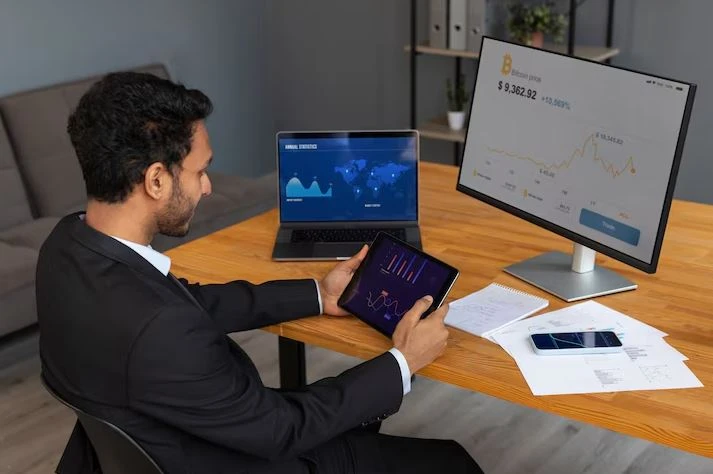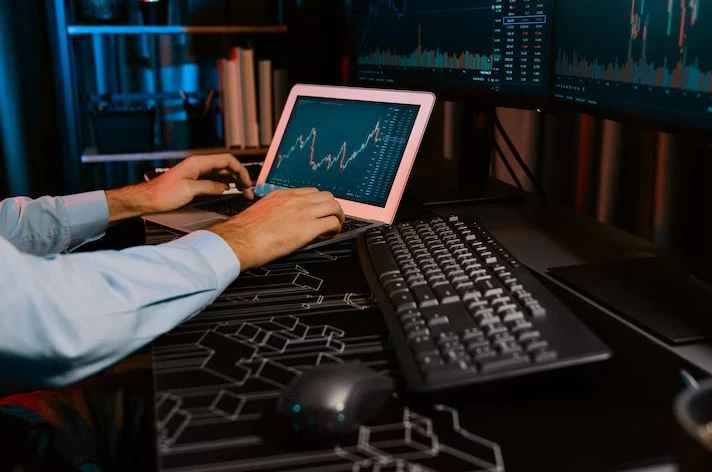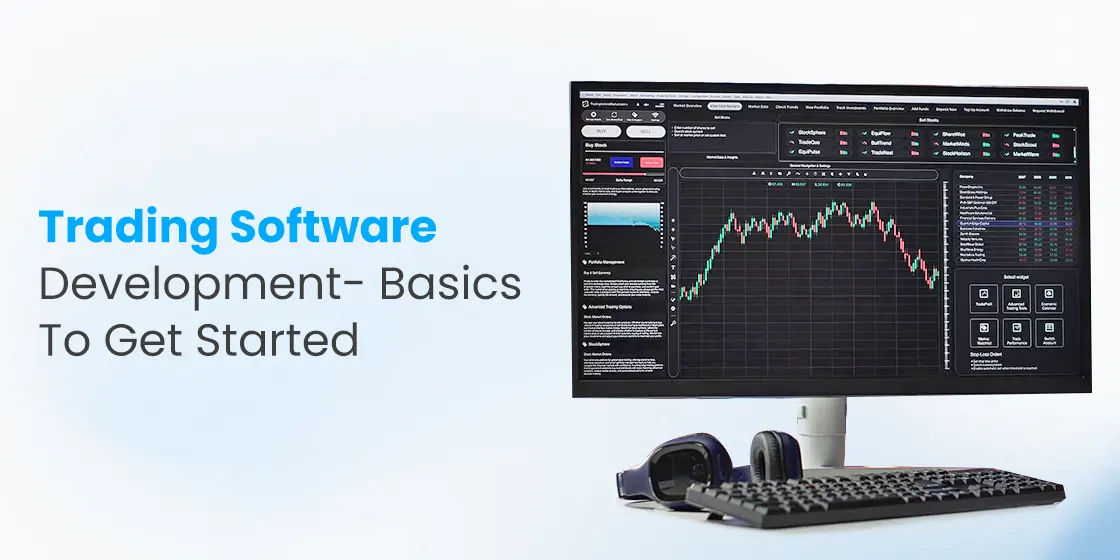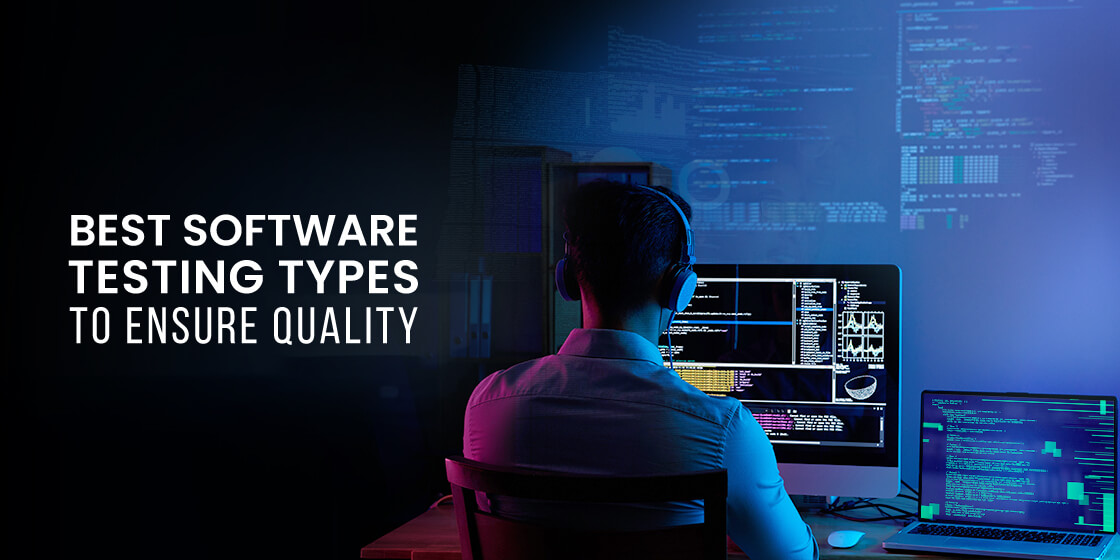Table of Content
Learn the Core Steps Involved in Trading Software Development
Trading software development involves creating digital platforms that enable users to analyze financial markets, execute trades, and manage portfolios in real-time. These applications are essential tools for individual traders, institutional investors, and brokerage firms, offering automation, speed, and accuracy in trading operations. With the rise of online trading and algorithmic strategies, the demand for robust and scalable trading software has grown significantly.
For beginners, it’s important to understand the foundational elements of trading software, such as market data feeds, charting tools, and order execution systems. A solid trading platform should provide real-time data updates, intuitive user interfaces, customizable dashboards, and secure connectivity to exchanges or brokers. If anything listed above is neglected or ignored in development, the adverse repercussions could become visible in whole software.
To build a quality trading software, it is therefore recommended to take professional software development services. It ensures to build cutting-edge applications rightly as per the market standards. Meanwhile, you can also build this software individually if you’ve got the correct knowledge of technical development. This blog will let you know how it could be done by following a step-by-step approach that guarantees quality product development. Let’s start from the basics understanding why trading software are becoming popular globally.
Rising Popularity of Online Trading Software

Online trading software is becoming increasingly popular worldwide due to its accessibility and convenience. Unlike traditional trading methods that require intermediaries or in-person transactions, online platforms allow individuals to trade from anywhere using a computer or mobile device. This ease of access has opened the doors to a broader demographic, enabling both beginners and experienced investors to participate in the financial markets without needing specialized infrastructure.
Another major reason for the growing popularity is the wide range of features and tools integrated into modern trading software. These platforms often include real-time data analysis, customizable charts, automated trading options, and risk management tools. Such capabilities empower traders to make informed decisions quickly and efficiently, improving their chances of success. Additionally, integration with educational resources and demo accounts helps new users build confidence before committing real funds.
The global shift toward digital finance and increased interest in personal wealth management has also contributed to the rise of online trading software. As people become more financially aware and seek alternative income streams, online trading offers a practical and flexible solution. Moreover, advancements in technology continue to enhance the performance and personalization of trading platforms, making them more appealing and effective for a diverse user base.
Trading Software Development: Learning the Core Steps

Developing a trading software requires clear understanding of the technicals that are involved in this project. Besides that, an organized approach is also required to streamline the whole development process. Let’s take a look at the key steps for trading software development defined below.
Financial Market Research
Conducting market research before developing trading software is crucial to understanding the needs, and behaviors of your target users. Start by identifying your audience as they will be the main users of the platform. Use surveys, interviews, and online forums to gather insights into their trading habits, and desired features. Additionally, analyze existing platforms to determine what they offer, and how your product can fill those gaps. This helps in defining your unique value proposition and aligning the software’s features with real user demands.
It’s also essential to study industry trends, functional requirements, and technological advancements. Monitor competitors, market growth forecasts, and user reviews to identify emerging needs and expectations. Evaluating the legal and compliance landscape ensures your software meets necessary standards, especially when dealing with financial data and transactions. Meanwhile, also assess the viability of your software concept through SWOT analysis to validate demand and reduce risks before development begins.
Analyze Features
Choosing the best features for trading software development starts with understanding the needs of your target users and the goals of your platform. Begin by categorizing essential features into core functionalities. From there, consider user-centric enhancements like customizable dashboards, advanced charting tools, watch-lists, and alerts. These features should be prioritized based on user feedback, competitor analysis, and current market expectations, ensuring the platform offers both utility and a seamless user experience.
Equally important is balancing complexity with usability. While advanced users might appreciate algorithmic trading support or API integrations, beginners will benefit more from educational resources, demo accounts, and simplified interfaces. These features should be scalable, allowing room for future upgrades and enhancements. Prioritizing features that deliver immediate value while maintaining flexibility for future innovation ensures your trading software meets both short-term goals and long-term user engagement.
Fuel innovation by leveraging bespoke software solutions. Get in touch with our team of experts to build cutting-edge software products.
Get a QuoteSelect Development Platform
The next important step in the trading software development process is selecting the most suitable development platform. This decision involves choosing the underlying technology stack, including the web programming languages, frameworks, and operating systems that will support the software. It’s essential to evaluate factors and compatibility with third-party APIs or financial data providers. Selecting the right platform lays the foundation for a stable, efficient, and responsive application.
Additionally, the choice of development platform should align with your target audience and their preferred devices. If you aim to reach users on both desktop and mobile, consider cross-platform solutions or frameworks that support multi-device deployment without compromising performance. Cloud-based platforms can also provide enhanced scalability and reduce infrastructure costs, especially for startups.
Application Development
At this stage, you are ready to initiate the actual development process, where your trading software begins to take shape. This phase marks the transition from planning and design to execution. It starts with setting up the project environment, including development tools, version control systems, and server infrastructure. Teams typically begin by defining a clear roadmap for implementation, breaking down the development tasks into manageable modules or sprints.
The development itself encompasses both front-end and back-end components. Front-end development focuses on building the user interface. It emphasizes usability, and a seamless user experience across devices. Meanwhile, back-end development handles the behind-the-scenes logic and infrastructure that power the platform. This includes database management, API integrations, and execution engines for processing trades. Both components must work in harmony to deliver a fast, reliable, and secure trading environment.
Software Testing
The next crucial step in the development lifecycle is the testing phase. This process involves a comprehensive review of the software’s performance, security, reliability, and user interface across various scenarios. Different types of testing are employed to ensure seamless interaction between modules, and system testing to validate the application as a whole. Functional and non-functional tests are conducted to detect bugs, verify logic accuracy, and assess responsiveness under different user loads.
Given the sensitive and highly regulated nature of fintech applications, quality assurance in trading software is held to particularly high standards. Financial transactions must be processed with complete accuracy, and any glitches or security vulnerabilities can have serious consequences. By thoroughly testing every aspect of the application, developers can minimize risks, build user trust, and lay the foundation for a stable and secure product launch.
Application Deployment
Once the testing phase is complete and all identified bugs have been resolved, the trading application is ready for deployment and release to the appropriate platforms or app stores. This stage involves preparing the final production build, configuring hosting environments and following the submission guidelines for app marketplaces. It’s important to ensure that all documentation, legal disclaimers, privacy policies, and compliance certifications are in place before going live.
However, releasing the app is not the end of the development cycle—it marks the beginning of ongoing maintenance and improvement. Regular updates are essential to keep the application stable and secure, especially in the fast-evolving fintech space where market data providers, and regulatory requirements can change frequently. Maintaining a clear update roadmap and a responsive support system helps build user trust and ensures long-term success in the market.
Frequently Asked Questions
| What is a trading software? A trading software is a digital platform that enables users to buy, sell, and manage financial assets in real-time. It provides tools for market analysis, order execution, and portfolio tracking across various financial instruments. |
| Why online trading is becoming popular? Online trading is becoming popular due to its great accessibility. It offers real-time data, low fees, and user-friendly platforms that appeal to both beginners and experienced investors. |
| How to develop a trading software? To develop trading software, choose the right technology stack and follow a structured development process. This will ensure to build a quality trading software rightly as per the market trends. |
Final Words
That takes us to the end of this blog in which we have discussed the basics of trading software development. These platforms are gaining a lot of attention lately, as people are increasingly turning towards them to get connected to the markets. Many institutions will links to financial markets are therefore building these applications to facilitate more and more people. This blog has discussed all the key details about trading software development, so make sure to read it twice to build these software as per the latest trends.
Empower your digital initiatives with BariTechSol, a premier custom software development company. Our skilled team tailors cutting-edge solutions to your unique needs. Elevate your tech experience and stay ahead in the digital realm. Partner with BaritechSol and code the success of your next big idea.


